TRIGONOMETRIC RATIOS OF SOME SPECIFIC ANGLES
For certain specific angles such as 30°, 45° and 60°, which are frequently seen in applications, we can use geometry to determine the trigonometric ratios.
Trigonometric Ratios of 30° and 60°
Let ABC be an equilateral triangle whose sides have length a (see the figure given below). Draw AD perpendicular to BC, then D bisects the side BC.
Then,
BD = DC = a/2
∠BAD = ∠DAC = 30°
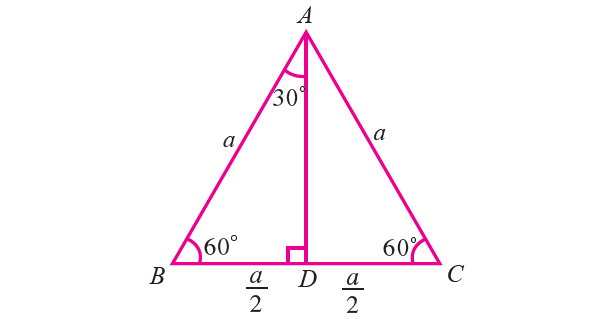
Now, in right triangle ADB, ∠BAD = 30° and BD = a/2.
In right triangle ADB, by Pythagorean theorem,
AB2 = AD2 + BD2
a2 = AD2 + (a/2)2
a2 - (a2/4) = AD2
3a²/4 = AD2
√(3a2/4) = AD
√3 ⋅ a/2 = m AD
Hence, we can find the trigonometric ratios of angle 30° from the right triangle ADB.
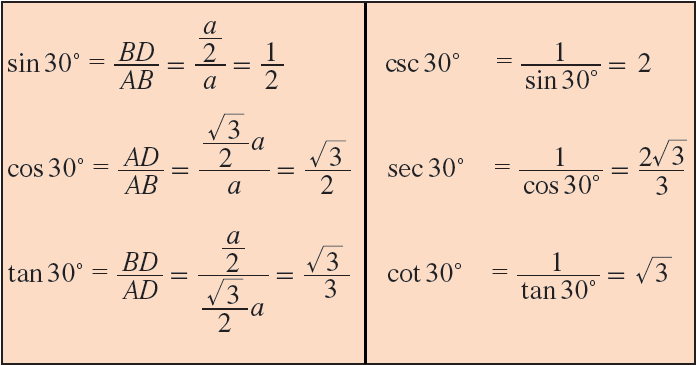
In right triangle ADB, ∠ABD = 60°.
So, we can determine the trigonometric ratios of angle 60°.
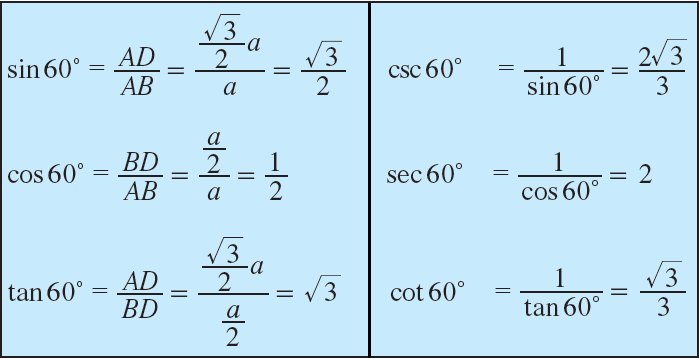
Trigonometric Ratio of 45°
If an acute angle of a right triangle is 45°, then the other acute angle is also 45°.
Thus the triangle is isosceles. Let us consider the triangle ABC with
∠B = 90°
∠A = ∠C = 45°
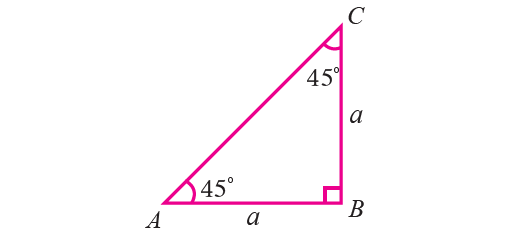
Then AB = BC.
Let AB = BC = a.
By Pythagorean theorem,
AC2 = AB2 + BC2
AC2 = a2 + a2
AC2 = 2a2
Take square root on each side.
AC = a√2
Hence, we can find the trigonometric ratios of angle 45° from the right triangle ABC.
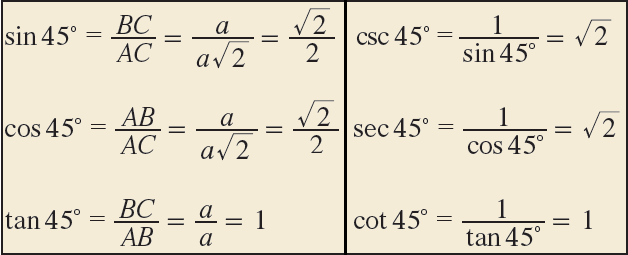
Trigonometric Ratios of 0° and 90°
Consider the figure given below which shows a circle of radius 1 unit centered at the origin.
Let P be a point on the circle in the first quadrant with coordinates (x, y).
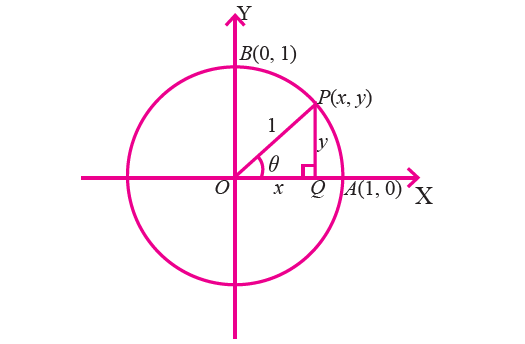
We drop a perpendicular PQ from P to the x-axis in order to form the right triangle OPQ.
Let ∠POQ = θ, then
sin θ = PQ / OP = y/1 = y (y coordinate of P)
cos θ = OQ / OP = x/1 = x (x coordinate of P)
tan θ = PQ / OQ = y/x
If OP coincides with OA, then angle θ = 0°.
Since, the coordinates of A are (1, 0), we have

If OP coincides with OB, then angle θ = 90°.
Since, the coordinates of B are (0, 1), we have

The six trigonometric ratios of angles 0°, 30°, 45°, 60° and 90° are provided in the following table.
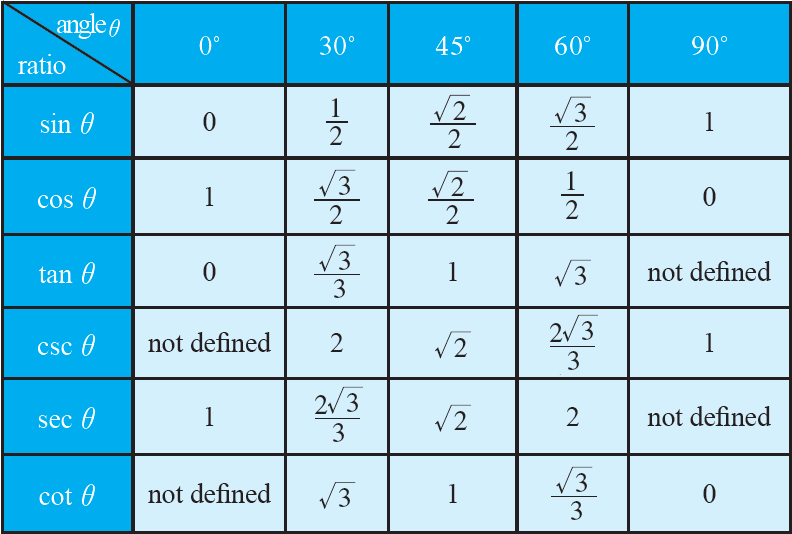
Kindly mail your feedback to v4formath@gmail.com
We always appreciate your feedback.
©All rights reserved. onlinemath4all.com
Recent Articles
-
Digital SAT Math Problems and Solutions (Part - 144)
Apr 14, 25 07:27 PM
Digital SAT Math Problems and Solutions (Part - 144) -
Quadratic Equation Problems with Solutions (Part - 1)
Apr 14, 25 11:33 AM
Quadratic Equation Problems with Solutions (Part - 1) -
Quadratic Equation Problems with Solutions (Part - 2)
Apr 14, 25 11:22 AM
Quadratic Equation Problems with Solutions (Part - 2)
